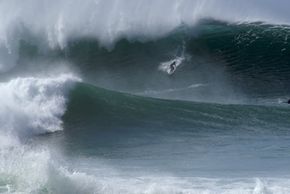"This'll be a piece of cake," you think to yourself as you take a surfboard out for the first time. But after about the tenth wipeout, you begin to see bruises and realize just how unruly and powerful ocean waves are. Indeed, surfing fatalities remind us how aggressive waves can be. But this brawny wave power is exactly what some scientists hope will wean the world off fossil fuels.
Take a look at a globe and you'll quickly notice that dry land is in the minority on this planet -- water, in fact, covers most (about 70 percent) of the Earth's surface. It's certainly a tantalizing prospect to think that we could gather usable energy from the natural forces at work on water's surface.
Advertisement
Wave energy refers to the harnessing of the Herculean power of water waves. Waves hold a gargantuan amount of untapped energy, some of which we can use to power at least a portion of the world's everyday electricity. Though estimates vary about how much power waves could contribute to the world's energy consumption, some say it could realistically contribute about 10 percent [source: OEC].
Theoretically, however, this is not even close to the amount of energy ocean waves could provide. Indeed, only about 0.2 percent of the energy in ocean waves could power the entire planet [source: Drollette]. Given this knowledge, one might wonder why people aren't paying more attention to and investing in the development of wave energy.
The tough part is coming up with ways to turn this power into usable energy. In this article, we'll investigate the different methods engineers have developed for gathering wave energy. But first, it's important to know just how waves get this energy in the first place.
